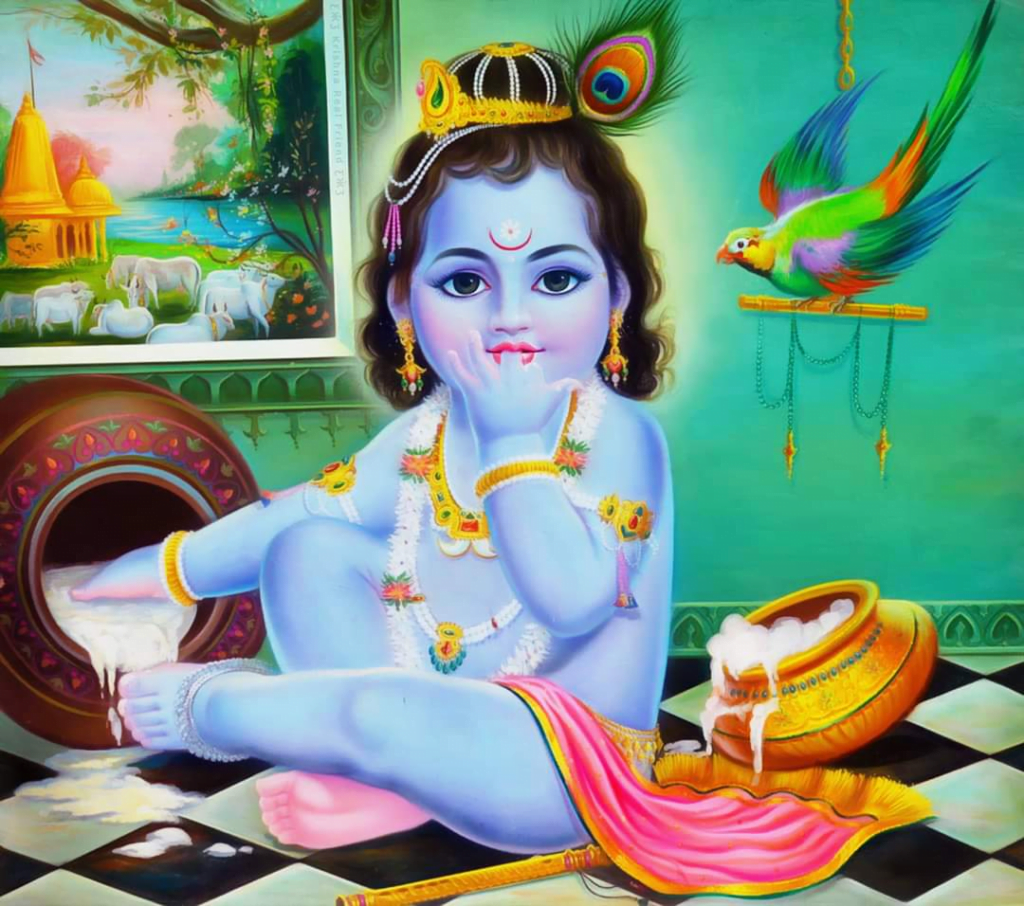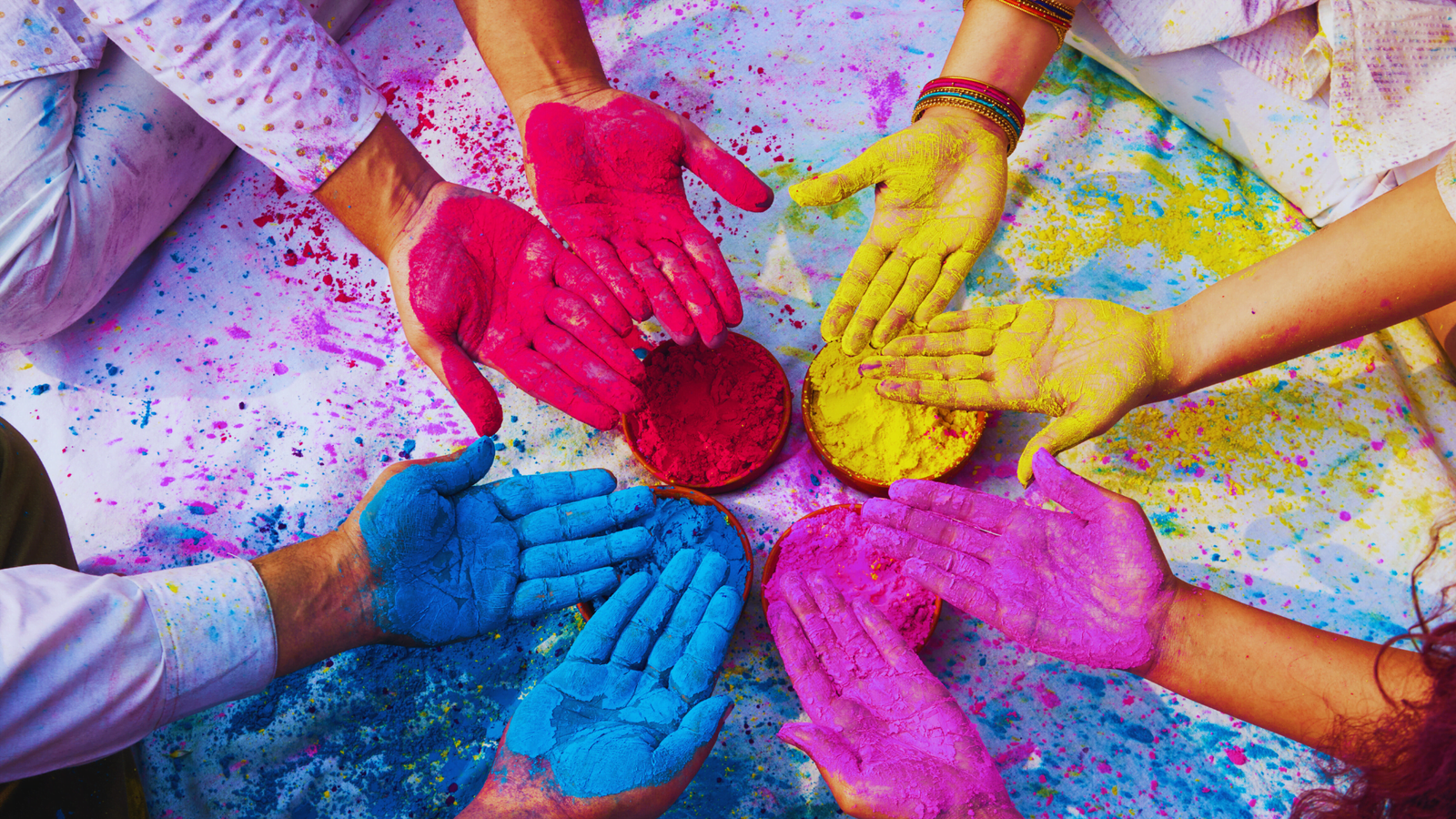Introduction:
Janmashtami, also known as Krishna Janmashtami or Gokulashtami, is one of the most revered and joyously celebrated festivals in India and among Hindus worldwide. This auspicious occasion marks the birth of Lord Krishna, the eighth avatar of Lord Vishnu, who is considered a symbol of love, compassion, and divine wisdom. With vibrant traditions, mesmerizing rituals, and heartwarming legends, Janmashtami transcends cultural and geographical boundaries, uniting people in a celebration of spirituality and devotion.
The Significance of Janmashtami:
Janmashtami falls on the eighth day (Ashtami) of the Krishna Paksha (waning phase of the moon) in the Hindu month of Bhadrapada. Lord Krishna’s birth is not just a historical event but a profound spiritual and philosophical one. His teachings in the Bhagavad Gita continue to inspire and guide millions of people, emphasizing the importance of righteousness (dharma), selfless devotion, and the path to spiritual enlightenment.
The Celebration:
- Midnight Pooja: The main highlight of Janmashtami is the midnight celebration when Lord Krishna is believed to have been born. Devotees gather at temples and homes, offering prayers, bhajans (devotional songs), and reading from the Bhagavad Gita. At the stroke of midnight, the idol of Lord Krishna is bathed, dressed in new clothes, and placed in a beautifully decorated cradle.
- Dahi Handi: In Maharashtraand other state , Janmashtami is celebrated with the Dahi Handi tradition. Young enthusiasts form human pyramids to break a pot filled with yogurt hung at a considerable height. This tradition symbolizes Krishna’s mischievous nature as a child.
- Rasa Lila: In the holy town of Vrindavan, where Lord Krishna spent his childhood, the Rasa Lila reenactments are a highlight of the festival. Devotees depict the divine love story between Krishna and Radha through dance and drama.
- Fasting and Feasting: Many devotees fast on Janmashtami until midnight, breaking their fast only after the birth of Lord Krishna. Special dishes like makhan-mishri (butter and sugar), panjiri (a sweet dish made with wheat), and various milk-based sweets are prepared and offered to the deity.
- Jhulanotsav: Temples are beautifully decorated with flowers, swings (jhulas) are hung, and idols of Radha and Krishna are placed on them. Devotees swing the idols while singing devotional songs, creating a joyous atmosphere.
- Colorful Processions: In various parts of India, grand processions featuring idols of Lord Krishna are taken through the streets, accompanied by traditional music and dance. These processions are a spectacle to behold and unite communities in celebration.
- Spiritual Discourses: Many spiritual leaders and scholars deliver discourses on the life and teachings of Lord Krishna, enlightening devotees with the timeless wisdom contained in the Bhagavad Gita.
The Significance of Swinging Laddo Gopal {JHULA}

Swinging Lord Krishna or Laddo Gopal holds a special place in the hearts of devotees. This tradition symbolizes the love, care, and devotion that devotees have for the divine child.
Symbolism of the Swing:
Childhood Memories: The swing reminds us of Krishna’s playful childhood in Vrindavan, where he enjoyed swinging with his friends.
Expressing Love: Placing the deity on a swing allows devotees to nurture and protect the divine child, expressing their love and devotion.
Devotional Offering: Devotees adorn the swing with flowers and offer sweets, incense, and prayers, seeking the blessings of Lord Krishna.
Festival Tradition: Swinging deities is a common practice during Krishna Janmashtami and other Krishna-related festivals, creating a joyous and festive atmosphere.
Swinging Lord Krishna or Laddo Gopal is a cherished tradition that fosters a deeper spiritual connection between devotees and the divine. It represents the eternal love that exists between the devotee and their beloved Lord.

Key Timings for Krishna Janmashtami Celebration
On September 6th, the Ashtami (eighth day) tithi will begin at 3:38 PM and continue until the next day, September 7th, until 5:15 PM.
Lord Krishna was born under the Rohini Nakshatra. On September 6th, the Rohini Nakshatra will be present from 9:20 AM in the morning until 10:25 AM on the next day, September 7th.
Lord Krishna’s birth took place during the eighth muhurat of the night. Therefore, the Krishna Janmashtami celebrations commence at midnight, starting at 11:57 PM and lasting until 12:42 AM. During this time, devotees can perform the Janmashtami puja.
Divine Delights: What Prasad to Prepare for Janmashtami

Offering prasad (sacred food) to Lord Krishna on Janmashtami is a cherished tradition for devotees. Lord Krishna is known for his love for specific foods, and offering these items as prasad is a way to express devotion and seek his blessings. Here are some traditional prasad items commonly offered to Lord Krishna on Janmashtami:
- Makhan (Butter): Lord Krishna is often referred to as “Makhan Chor” (butter thief) due to his childhood antics of stealing butter. Offering fresh, homemade butter as prasad is a common practice.
- Mishri (Sugar Cubes or Sugar Crystals): Mishri is another favorite of Lord Krishna. Devotees offer it along with butter or as a standalone prasad item.
- Panchamrit: Panchamrit is a mixture of five ingredients: milk, yogurt, honey, ghee (clarified butter), and sugar. It symbolizes purity and is offered to Lord Krishna as a sweet and nourishing prasad.
- Fruits: Fresh fruits like bananas, apples, and grapes are offered to Lord Krishna. He is often depicted holding a fruit in his hand, emphasizing their significance.
- Chhappan Bhog: Chhappan Bhog is an elaborate offering of 56 different food items, including sweets, savories, and various delicacies. It represents a grand feast to celebrate Lord Krishna’s birth.
- Kheer (Rice Pudding): Kheer is a sweet rice pudding made with milk, rice, sugar, and aromatic spices. It’s prepared with devotion and offered to Lord Krishna.
- Churma Ladoo: Ladoos made from wheat flour and ghee, known as Churma Ladoo, are a traditional prasad item loved by Lord Krishna.
- Sweets: Various sweets such as peda, burfi, jalebi, and modak are prepared and offered as prasad, adding sweetness to the celebration.
- Savories: Alongside sweets, savory items like samosas, pakoras, and namkeen are also offered to Lord Krishna.
- Tulsi Leaves: Fresh tulsi (holy basil) leaves are placed on the prasad thali or offered to Lord Krishna. Tulsi is considered dear to him.
- Flowers: Fresh and fragrant flowers are an essential part of the prasad offering, adding beauty and freshness to the altar.
- Incense and Diyas: Burning incense sticks and lighting oil lamps or diyas are customary during the puja as offerings to create a spiritually uplifting atmosphere.
- Dhaniya Panjiri is a beloved North Indian sweet often prepared as prasad for Janmashtami. To make it, roast almonds, cashews, raisins, and foxnuts in ghee until golden. Fry edible gum (gond) until it puffs up, and roast coriander powder, grated dried coconut, poppy seeds, and melon seeds. Grind all the roasted ingredients into a coarse powder, mix in powdered sugar, and your Dhaniya Panjiri is ready to be offered as prasad or enjoyed as a festive treat.
When offering prasad to Lord Krishna, it’s important to do so with love and devotion. Devotees often sing bhajans (devotional songs) and chant mantras while making the offerings. After the offerings are made, the prasad is distributed among devotees as a blessed and sanctified meal, symbolizing the sharing of divine grace.
Conclusion:
Janmashtami is more than a festival; it is a celebration of divinity, love, and the eternal wisdom imparted by Lord Krishna. It unites people from diverse backgrounds in a spirit of devotion and spirituality. Whether you are a devout follower or simply a curious observer, Janmashtami offers a glimpse into the rich tapestry of Indian culture and the enduring legacy of Lord Krishna’s teachings. So, this Janmashtami, immerse yourself in the festivities, seek inner enlightenment, and join the world in celebrating the birth of the beloved Lord Krishna.














